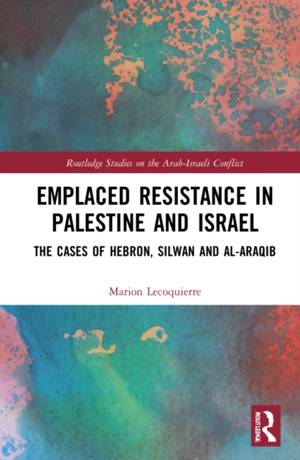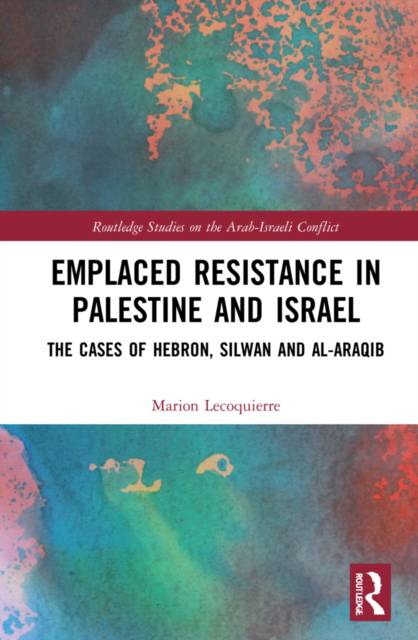
- Retrait gratuit dans votre magasin Club
- 7.000.000 titres dans notre catalogue
- Payer en toute sécurité
- Toujours un magasin près de chez vous
- Retrait gratuit dans votre magasin Club
- 7.000.0000 titres dans notre catalogue
- Payer en toute sécurité
- Toujours un magasin près de chez vous
Emplaced Resistance in Palestine and Israel
The Cases of Hebron, Silwan and Al-Araqib
Marion LecoquierreDescription
The Israeli-Palestinian conflict gravitates constantly around the question of territorial control due to the settler-colonial principle present at the core of the Zionist project. Acknowledging space as a central tool of domination used by the Israeli authorities, this volume sheds light on the way space can become both a resource for and an outcome of protest, with an emphasis placed on the way it is used and produced through practices of resistance by subaltern groups.
The research relies on a comparative approach, relying on data collected in the course of fieldwork conducted between 2012 and 2015 in Palestine and Israel. It focuses on three "sites of contention", which include the H2 area in Hebron (the occupied Old City, under Israeli authority), the "core" neighbourhoods of Silwan (Wadi Hilwe and al-Bustan) and the unrecognized Bedouin village of al-Araqib, in the Negev desert. Through these three case studies, the book tackles different strategies that engage with the materiality of space, place, sense of place, territory, landscape, network and scale, showing the mobilization of a real "spatial repertoire" of contention. The different regimes of control give rise to strategies that are first and foremost emplaced, i.e. rooted in the local.
Providing an original comparison between flashpoints of the Palestinian resistance against the Israeli politics of dispossession and expulsion, the book is a key resource for scholars and readers interested in political geography, political science, sociology, and the Israel-Palestine conflict.
Spécifications
Parties prenantes
- Auteur(s) :
- Editeur:
Contenu
- Nombre de pages :
- 314
- Langue:
- Anglais
- Collection :
Caractéristiques
- EAN:
- 9781138555716
- Date de parution :
- 19-11-21
- Format:
- Livre relié
- Format numérique:
- Genaaid
- Dimensions :
- 156 mm x 234 mm
- Poids :
- 630 g

Les avis
Nous publions uniquement les avis qui respectent les conditions requises. Consultez nos conditions pour les avis.






